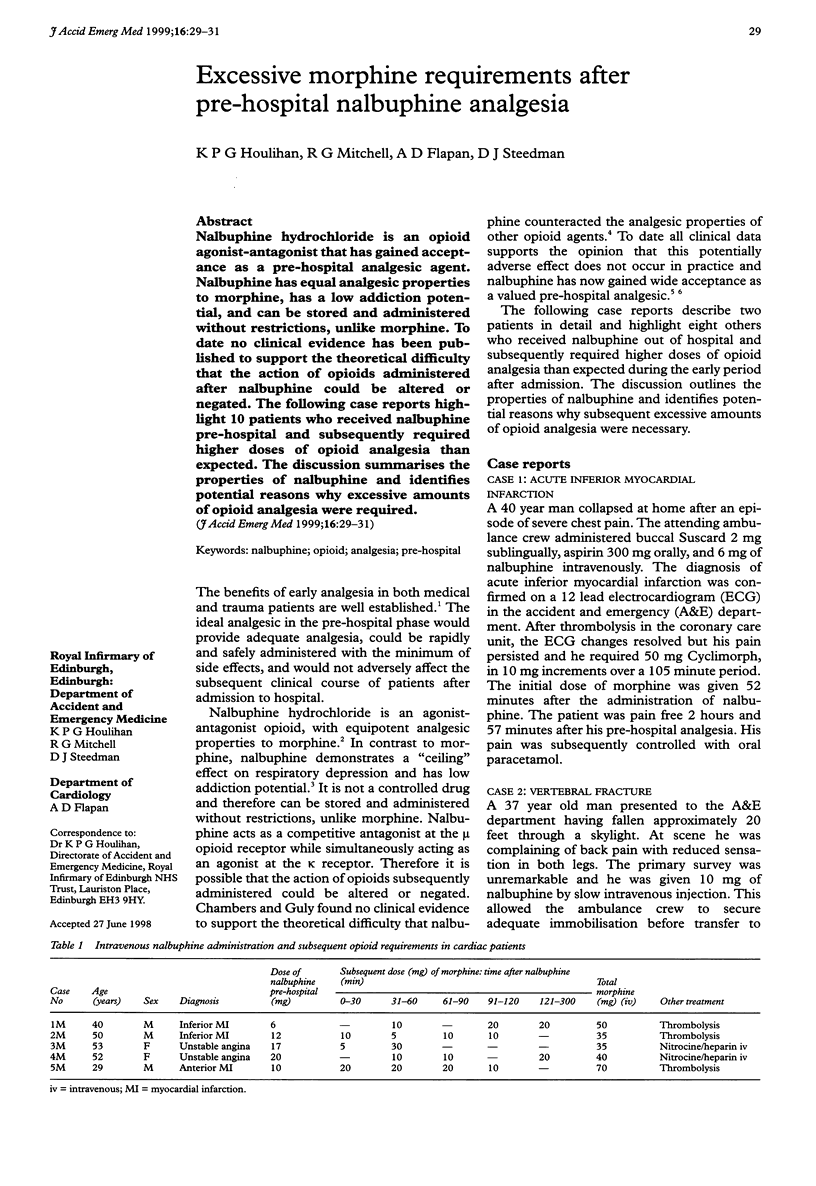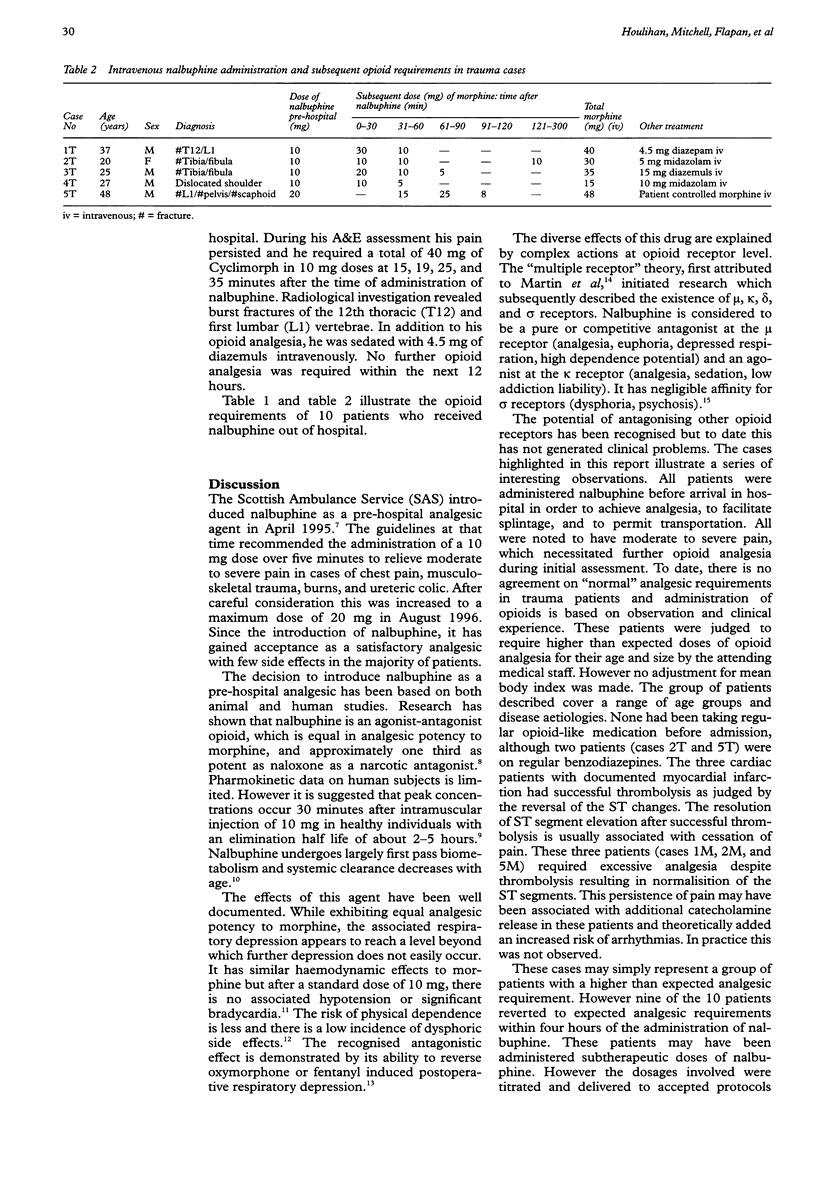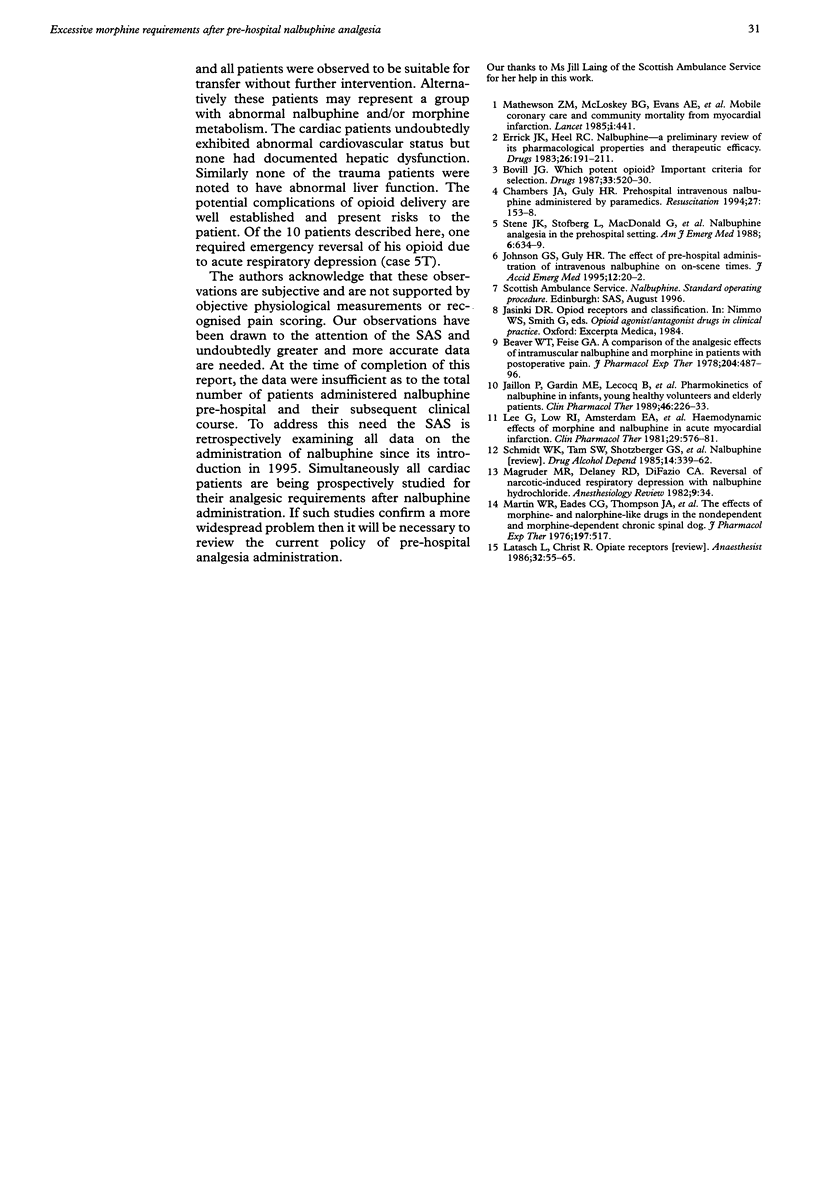Abstract
Nalbuphine hydrochloride is an opioid agonist-antagonist that has gained acceptance as a pre-hospital analgesic agent. Nalbuphine has equal analgesic properties to morphine, has a low addiction potential, and can be stored and administered without restrictions, unlike morphine. To date no clinical evidence has been published to support the theoretical difficulty that the action of opioids administered after nalbuphine could be altered or negated. The following case reports highlight 10 patients who received nalbuphine pre-hospital and subsequently required higher doses of opioid analgesia than expected. The discussion summarises the properties of nalbuphine and identifies potential reasons why excessive amounts of opioid analgesia were required.
Full text
PDF


Selected References
These references are in PubMed. This may not be the complete list of references from this article.
- Beaver W. T., Feise G. A. A comparison of the analgesic effect of intramuscular nalbuphine and morphine in patients with postoperative pain. J Pharmacol Exp Ther. 1978 Feb;204(2):487–496. [PubMed] [Google Scholar]
- Bovill J. G. Which potent opioid? Important criteria for selection. Drugs. 1987 May;33(5):520–530. doi: 10.2165/00003495-198733050-00006. [DOI] [PubMed] [Google Scholar]
- Chambers J. A., Guly H. R. Prehospital intravenous nalbuphine administered by paramedics. Resuscitation. 1994 Mar;27(2):153–158. doi: 10.1016/0300-9572(94)90008-6. [DOI] [PubMed] [Google Scholar]
- Errick J. K., Heel R. C. Nalbuphine. A preliminary review of its pharmacological properties and therapeutic efficacy. Drugs. 1983 Sep;26(3):191–211. doi: 10.2165/00003495-198326030-00002. [DOI] [PubMed] [Google Scholar]
- Jaillon P., Gardin M. E., Lecocq B., Richard M. O., Meignan S., Blondel Y., Grippat J. C., Bergnieres J., Vergnoux O. Pharmacokinetics of nalbuphine in infants, young healthy volunteers, and elderly patients. Clin Pharmacol Ther. 1989 Aug;46(2):226–233. doi: 10.1038/clpt.1989.130. [DOI] [PubMed] [Google Scholar]
- Johnson G. S., Guly H. R. The effect of pre-hospital administration of intravenous nalbuphine on on-scene times. J Accid Emerg Med. 1995 Mar;12(1):20–22. doi: 10.1136/emj.12.1.20. [DOI] [PMC free article] [PubMed] [Google Scholar]
- Latasch L., Christ R. Opiatrezeptoren. Anaesthesist. 1986 Feb;35(2):55–65. [PubMed] [Google Scholar]
- Lee G., Low R. I., Amsterdam E. A., DeMaria A. N., Huber P. W., Mason D. T. Hemodynamic effects of morphine and nalbuphine in acute myocardial infarction. Clin Pharmacol Ther. 1981 May;29(5):576–581. doi: 10.1038/clpt.1981.80. [DOI] [PubMed] [Google Scholar]
- Martin W. R., Eades C. G., Thompson J. A., Huppler R. E., Gilbert P. E. The effects of morphine- and nalorphine- like drugs in the nondependent and morphine-dependent chronic spinal dog. J Pharmacol Exp Ther. 1976 Jun;197(3):517–532. [PubMed] [Google Scholar]
- Mathewson Z. M., McCloskey B. G., Evans A. E., Russell C. J., Wilson C. Mobile coronary care and community mortality from myocardial infarction. Lancet. 1985 Feb 23;1(8426):441–444. doi: 10.1016/s0140-6736(85)91156-0. [DOI] [PubMed] [Google Scholar]
- Schmidt W. K., Tam S. W., Shotzberger G. S., Smith D. H., Jr, Clark R., Vernier V. G. Nalbuphine. Drug Alcohol Depend. 1985 Feb;14(3-4):339–362. doi: 10.1016/0376-8716(85)90066-3. [DOI] [PubMed] [Google Scholar]
- Stene J. K., Stofberg L., MacDonald G., Myers R. A., Ramzy A., Burns B. Nalbuphine analgesia in the prehospital setting. Am J Emerg Med. 1988 Nov;6(6):634–639. doi: 10.1016/0735-6757(88)90109-x. [DOI] [PubMed] [Google Scholar]


